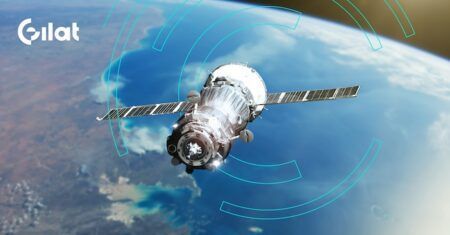From the successful launch of the Hughes Jupiter 3 satellite to the rise of Low Earth Orbit (LEO) satellites, the connectivity landscape experienced dramatic (and exciting) changes in 2023 – many of which leaders across the Hughes organisation laid out in bold predictions last December. Once again, when we asked them for predictions for the year ahead, they were eager to share. In no particular order, here are 10 industry trends and observations for 2024.
The value of LEO connectivity
Vaibhav Magow, VP International: “We always believed that LEO connectivity and multi-orbit solutions would offer great value to customers and now we are seeing use cases being implemented. Around the world, serving the broadband needs of communities lacking access will continue to be the biggest opportunity. We know that satellite alone cannot meet the goal of connecting everyone; that’s why last mile technologies, such as wi-fi, 4G and 5G, will continue to be important to achieve universal connectivity.”
Shifting macroeconomic climate
Dan Rasmussen, SVP & general manager, North America enterprise division: “The next year will be challenging due to the macroeconomic climate. Upgrading equipment requires capital or increased expense budgets. This means that companies are trying to stretch the life and utilisation of their current solution as far as possible. The labour market has also made some technical skills (cybersecurity, for example) too expensive to be maintained in smaller companies, which has increased the focus on managed services as knowledge and capabilities can be leveraged across customers.”
In-flight connectivity for all
Reza Rasoulian, VP broadband satellite services: “Free-to-all in-flight connectivity (IFC) is gaining traction, with airlines putting a focus on elevating the overall passenger experience. IFC is now crossing the chasm from being a ‘nice to have’ service only offered by innovator airlines to being a must have – in other words, table stakes – for all airlines. Our ESA-enabled LEO Solutions in aviation, as well as Hughes Jupiter 3 for IFC in North America, will be gamechangers.”
Entering the era of hybrid connectivity
Joe Bernabucci, director of strategy: “We have officially entered the era in which hybrid connectivity, both multi-transport and multi-orbit, will be commonplace. There will continue to be an increasing need to apply smart technologies and managed services to integrate these various transports in ways that create dynamic, always-on connectivity solutions. Multipath solutions, like HughesNet Fusion, are going to be gamechangers in 2024.”
Direct-to-device capabilities
Mark Wymer, SVP strategy & distribution: “Connectivity to handheld devices will become more mainstream and we will see a variety of new and enhanced capabilities. We’ve already started to see Direct-to-Device (D2D) in logistics services, with parcel tracking and timing of delivery. But we’ll see other examples, like the broader adoption of technology for agriculture, utilising satellite backhaul to wireless networks.”
The enduring power of GEO satellites
Shivaji Chatterjee, president & managing director, Hughes Communications India: “With the launch of Jupiter 3, it is clear that GEO satellites are not going anywhere. Their capacity, coverage and economics can’t be matched. We are seeing a lot of global activity with GEOs, especially with regional satellites, software-defined flexible satellites, VHTS satellites, and sovereign satellites ordered by operators around the world.
Multi-transport for government agencies
Rick Lober, VP & GM, defence & government solutions: “We’re seeing a significant shift toward multi-transport networks in our work with government agencies. Government leaders recognise that they can take advantage of emerging technologies and capabilities and not get locked into one specific technology, solution or vendor, enabling them to explore and deploy a diverse range of networking technologies, including LEO, GEO and 5G, to meet the evolving needs of their users and branch locations.”
Satellite as part of 3GPP Standards
Jennifer Manner, SVP regulatory affairs: “While 5G terrestrial has not performed as expected, satellite as part of the 3GPP standards is outshining. With the focus on being included in 3GPP, high-speed broadband being provided, and D2D beginning, satellite is taking the lead and becoming more and more important to everyone.”
Increased IoT usage
Mike Tippets, VP marketing and communications: “Enterprises will see IoT usage increase. While smart thermostats have become common in homes, legacy business buildings have been slower to adopt or retrofit. There will be more entry-level testing and proof-of-concept pilots done around smart buildings and environmental controls, both to reduce expenses and to meet green initiatives. IoT devices can be used to monitor foot traffic to help with both security monitoring and buildings maintenance.”
Managed SASE takes centre stage
Colleen Caruso, VP solutions, sales engineering & operations: “The marriage of SD-WAN and SSE (Secure Service Edge) has happened; we expect 2024 to be the Secure Access Service Edge (SASE) honeymoon period. Enterprises of all sizes – small, medium and large – have deployed intelligent dual-path SD-WAN. The shift to the Cloud and the adoption of Software as a Service (SaaS) has had an impact. Cybersecurity continues to influence network architecture decisions because the risk is high. Based on all these trends, companies simply don’t have the in-house talent to design, deploy and support SASE, which will drive the need for managed services, like Managed SASE.”
More industry predictions from Hughes Enterprise leaders are available here.





